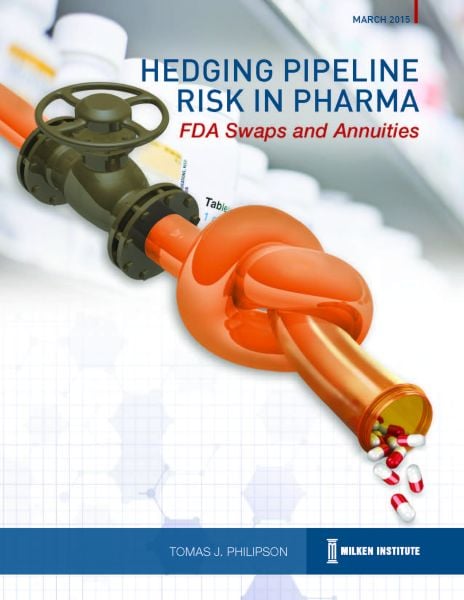
Hedging Pipeline Risk in Pharma: FDA Swaps and Annuities
The cost of capital to conduct medical R&D is high because investors must be compensated with significant returns to offset the risky and long drug-development process. This cost of capital could be reduced, and thus medical innovation spurred, by better financial mechanisms for sharing risks between medical R&D investors and outside capital markets.
This report lays out the general rationale for better risk-sharing in medical R&D and discusses two particular mechanisms through which this can be accomplished: FDA Swaps and Annuities.
In the world of medical innovation, the goal of using new hedging mechanisms goes beyond offering protection for investors. By lowering the cost of capital to the innovators seeking funds from investors, hedging mechanisms would also help accelerate the development of new medicines and devices that improve individual lives and ease the broader burdens of disease. The real beneficiaries of financial innovation in medicine are patients.
Background
The average development cost for drugs and biologics, medicines derived from living organisms, is $1.2 billion spread over about 10 years of development, testing and review. The odds of success are slim. Only about 13 percent of products starting the process are approved for sale in the U.S. Medical innovators thus often have a hard time competing for the attention of investors who could put their funds in, say, telecommunications, where billion dollar companies can be created within only a few years.
This rigorous FDA testing of medical products is essential to ensure the safety of medicines and devices offered to the public. Indeed, until clinical trials are completed, it is uncertain whether a drug or device will work in humans – a necessary process and one that also creates substantial uncertainty for investors. We propose that hedging tools similar to those used in other financial sectors would attract a larger number of investors to a field that would benefit from an infusion of more private capital.
